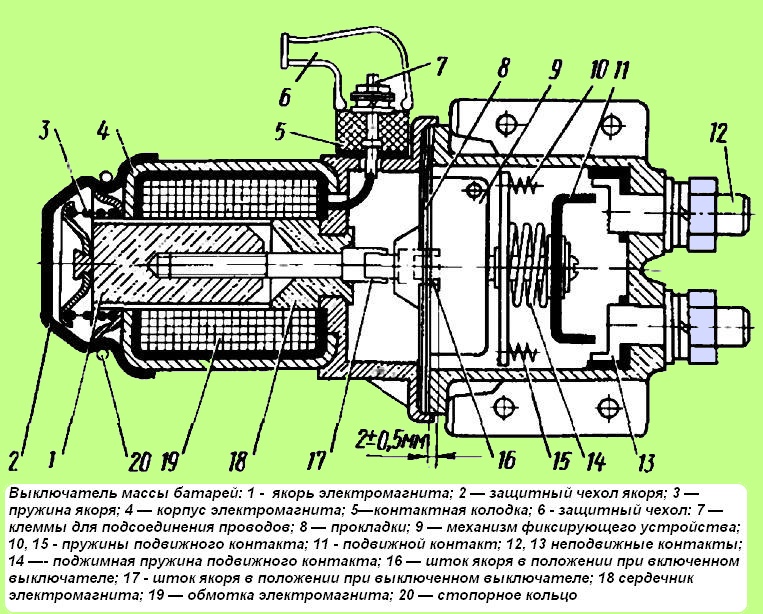The switch type VK 860B is designed to connect batteries to the vehicle ground and disconnect them
The design of the switch is shown in fig. 1.
The circuit breaker is designed for operating current up to 1000 A.
The minimum operating voltage of the circuit breaker is at least 20 V.
Rated operating current of the electromagnet 8.14 A.
The electric winding 19 is energized by the button.
The armature 1 is drawn into the solenoid and the rod 17 presses on the mechanism 9 of the locking device, through which it acts on the rod of the movable contact and closes it with the fixed contacts.
Mechanism 9 keeps contact 11 on even after the voltage is removed from winding 19 (the button is off).
When the button is pressed again (energizing the solenoid), the stem 17 acts on the mechanism 9, which releases the stem.
Moving contact 11 due to springs 10 and 15 (not shown in the figure) returns to its original position, opening the main contacts.
In the event of failure of the electrical part of the circuit breaker, the latter has manual control. By pressing the cover 2, you can turn the switch on or off.
During operation, it is necessary to ensure that the protective covers 6 are securely put on the terminals 7, protecting them from contamination.
At the same time, it is necessary to monitor the reliability of connecting drives to fixed contacts.
When disassembling the switch to strip the contacts, it is not necessary to disturb the position of the stem 17 screwed into the anchor along the thread.
If by chance the rod is turned out of the anchor or wrapped in it, then its position must be adjusted.
If the position of the stem is not adjusted, the switch will not be fixed in the on position.
To adjust, the rod is screwed into the armature so that its surface, when the armature is pushed into the solenoid, protrudes above the surface of the gaskets 8 by 2 ± 0.5 mm, as shown in fig. 1 (stem position 16).






